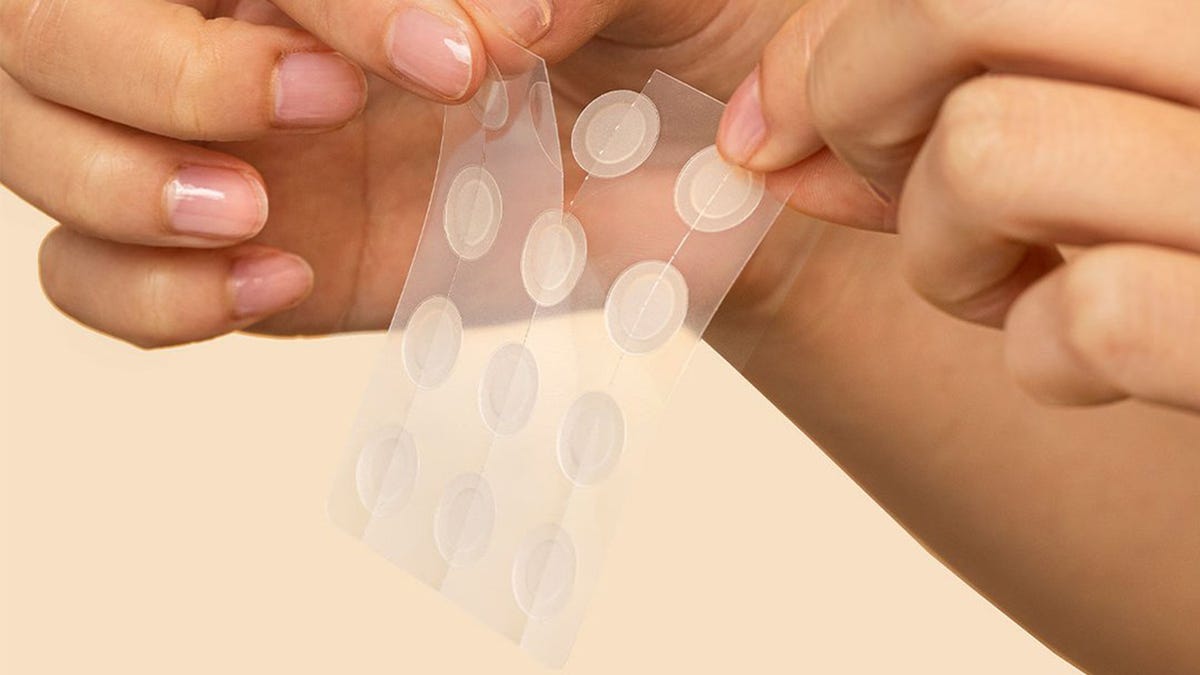 Why You Can Trust CNET
Why You Can Trust CNET Can hydrocolloid bandages help heal acne? Here's how they work
A dermatologist weighs in on the best acne stickers, how they can help breakouts and how to get the best results.

When you struggle with acne, you know that finding solutions for breakouts can be tricky. If you've tried every spot treatment, serum, mask, or cream in the book and still haven't gotten rid of a pesky pimple, another solution could help speed things up: hydrocolloid bandages for acne.
You might have heard of hydrocolloid bandages from more medical settings (they're used to heal burns, for example). Although not exactly the same, acne hydrocolloid bandages are similar in that they're made with the same type of material that helps skin heal quickly. Although all products vary, most of them are small pieces of hydrocolloid bandages that can easily fit over a blemish. Some are clear, some are not (for nighttime use), and some even have microneedles that infuse the blemish with acne medication. Either way, they all work basically the same way. Dermatologist Dr. Caren Campbell explains more below.
What do hydrocolloid bandages do?
"Hydrocolloid dressings are a great option for inflamed acne lesions," says Campbell. In other words, if your pimple is red or inflamed on the surface, that is the best type of acne to treat with a bandage. She also says you can use the bandages on raised acne lesions or whiteheads and cystic acne.
According to Campbell, the bandage creates a protective barrier that is more conducive to healing. They also prevent you from picking at the breakout, which definitely does not make the situation better. "Hydrocolloid dressing keeps your body's own healing messengers within the wound to expedite healing," she explains.
How do you use a hydrocolloid acne sticker?
To use the bandages, simply clean the area on your skin and apply the bandage, leaving it on for as long as possible. This is usually why they're most convenient to apply at night, although some are "invisible" and you can try covering them with makeup, or whatever you feel comfortable with.
Campbell suggests wearing the bandage for 24-48 hours if possible, and when they fall off cleanse the area with a gentle soap/cleanser and water. She also says that continuing to change them out more frequently actually can decrease the effectiveness, so leave the bandage on as long as you can for the best results. In addition, she says you can skip the medicated patches since they can cause some irritation.
The best hydrocolloid acne patches to try
Hero Cosmetics Mighty Patch Original
Campbell is a fan of the Mighty Patch Original since it's made with simple hydrocolloid, and contains no other medications or potentially irritating ingredients. I've personally been a fan of the Mighty Patch Original for several years now. It's my go-to product when I have a stubborn blemish that needs more TLC than a serum or spot treatment can handle. Once a pimple has "come to a head," I apply the patch at night and find that the swelling and redness is largely gone by the next morning. If it's a particularly bad breakout, I'll use it two nights in a row.
Rael Invisible Spot Cover
"Another non-medicated hydrocolloid spot treatment option and these stick better than some other brands," says Campbell. The brand says these are best for surfaced acne and whiteheads and can start to work in about 4 hours.
COSRX AC Collection Acne Patch
This patch contains Centella Asiatica Extract, which Campbell says has some evidence for helping to heal the skin. Again, Campbell does not like most patches with medication since ingredients like salicylic acid can irritate the skin. "Salicylic acid works better to prevent rather than treat active acne lesion," she says.

